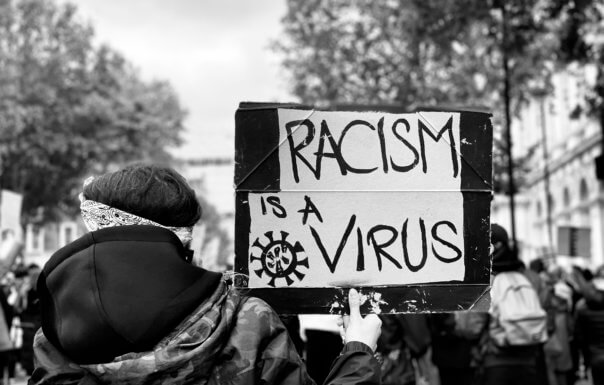
Clotilde Armand, a Frenchwoman who is a mayor in Bucharest, has also been clear that “much of the wealth in Europe flows from the poorer countries to the richer ones”.
By Nazarul Islam
Amid the schisms which increasingly sunder the EU’s West from its eastern members, both sides are, for their own reasons, careful to suppress the bloc’s big economic secret: that the Old EU runs the eleven newish members in Central and Eastern Europe as a colonial fief.
Against logic and justice, the EU’s 340 million western rich suck in wealth from the 103 million eastern poor. The elites in Central and Eastern Europe (CEE) rarely rock the boat as they hate to admit the facts; many have been co-opted or cowed. But now and then resentment bubbles up. “We’re not a colony, we’re not a second-class member”, Slovenia’s premier growled at the European Commission last year.
Clotilde Armand, a Frenchwoman who is a mayor in Bucharest, has also been clear that “much of the wealth in Europe flows from the poorer countries to the richer ones”.
In the West, those in the know are not just quiet; they egg on the bien-pensants who are convinced that the Old EU keeps the East afloat. “See those pesky Poles, Czechs and Hungarians,” your typical Eurocrat will whine. “They’re lurching away from liberalism, even as their hot paws reach out for our largesse!” This kind of thinking is doubly skewed.
The East’s purported nastiness merely matches supposed Western sins (compare Hungary on gender with Denmark on its Muslims, say). It’s the colonial status of CEE that really splits the EU, not any over-hyped cultural cleft.
To see what’s going on, start with the deal struck when the eleven joined in or after 2004. CEE was weak after communism but was forced to throw open its borders prematurely. Capital from the Old EU was to compensate. But as so often in history, the biggest impact was unforeseen. As frontiers fell, there was a human haemorrhage in CEE as the West hoovered in ten million of its workers. Up to a third had higher education; they’ve driven much of the West’s growth.
In Brussels, however, it is taboo to talk of this epochal shift of wealth. No one dares claim the credit for capturing those diligent white migrants, Christian in culture and capable of quick assimilation. Imagine the howls of “ray-cist!” if they did.
In the East, meanwhile, the elites are shamed to silence, for they’re complicit in a population collapse of wartime scale.
Croatia has lost almost a quarter of its people (an existential meltdown, one premier dared to moan). Romania, Bulgaria and the Baltic three of Lithuania, Estonia and Latvia have seen a fifth of workers go. Poland has lost over a tenth.
The social devastation has been horrendous. Hospitals have been hollowed out. Of the EU’s top ten countries for excess Covid mortality, eight are in CEE. You can be sure that the dearth of doctors helped cause the 315,000 extra deaths tallied up to June.
Overall, the demographic disaster has probably put paid to hopes of ever catching up. Beata Javorcik, Oxford professor and chief economist at the region’s development bank EBRD, judges that “Eastern Europe could grow old before it gets rich”.
The other unexpected consequence was a radical recasting of CEE’s business landscape. This too is a taboo topic in Berlin, and points West. Cash-rich offshore companies swooped in and bought the leading firms at knock-down prices. They rescued some bankrupt red behemoths (think VW with Skoda in the Czech Republic, Renault with Dacia in Romania).
But it went much too far; with new implantation which followed, most key sectors in industry and services are now dominated from abroad.
In Poland, foreigners own a half of the manufacturing and retailing industries, mainly in the form of larger firms. Non-locals account for half of Czech and Polish industrial exports. In Hungary, it’s four-fifths. This is unprecedented in countries with their competence. After all, the Czechs remember that in 1938 they were as prosperous as Switzerland and Sweden; the Poles and Hungarians recall that they were ahead of Spain before the latter’s civil war.
Unpick the statistical thicket, and the balance is bittersweet. Take the lost workers. The rich-country club OECD says that in educating them CEE donated a mind-boggling €400 billion or more. This far exceeds anything Brussels has sent. (Poland spent €160 billion to educate the 2.6 million who’ve gone, so far it has received €138 billion.)
The boost to western GDP delivered by CEE’s migrants is more massive still. The Old EU benefitted by over €1,000 billion in just the three pre-Covid years, official figures state. Then there’s the corporate investment. It’s now mature, so foreign profits and dividends sent home from CEE often exceed annual transfers from Brussels. And in any case, much EU money is spent on infrastructure, where western firms recoup up to four-fifths of the flows.
On the plus side, the region is now a supply chain Powerhaus (so the German financial paper Handelsblatt calls it). The Old EU syphons out components and embeds them in exports to China and elsewhere. Poland outranks France, Italy and Spain as supplier to Germany. CEE is also the Old EU’s key, and wholly captive, market.
[author title=”Nazarul Islam ” image=”https://sindhcourier.com/wp-content/uploads/2021/05/Nazarul-Islam-2.png”]The Bengal-born writer Nazarul Islam is a senior educationist based in USA. He writes for Sindh Courier and the newspapers of Bangladesh, India and America. He is author of a recently published book ‘Chasing Hope’ – a compilation of his 119 articles.[/author]